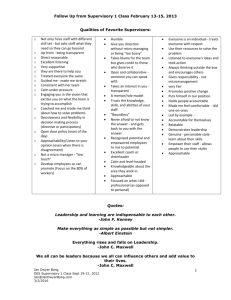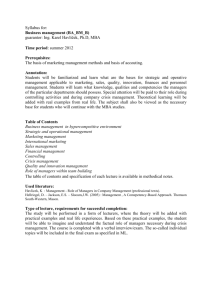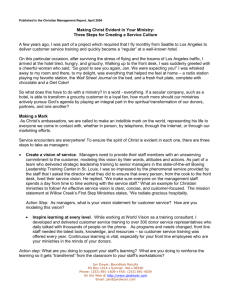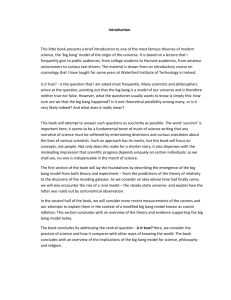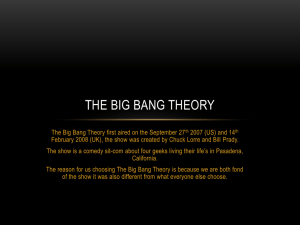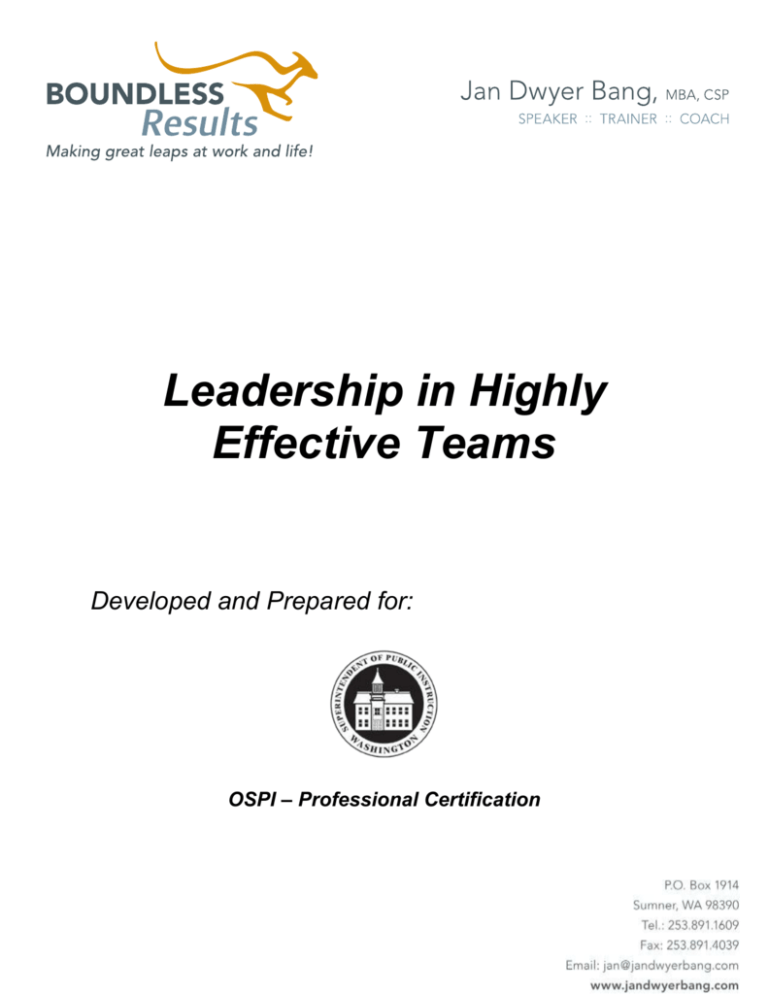
Leadership in Highly
Effective Teams
Developed and Prepared for:
OSPI – Professional Certification
Jan Dwyer Bang, MBA, CSP
For refreshing new insights, radiating energy, contagious humor, and easy to
implement strategies, Jan Dwyer Bang provides a unique and memorable
experience that will leave a lasting impression for your next meeting, retreat, or
teambuilding session. Jan helps organizations, associations, and individuals by
providing customized strategies with an uncanny ability to engage an audience.
With a University of Chicago MBA, and with hands-on experience in small
business, non-profits, and Fortune 500 companies, Jan brings expertise that
is grounded in real-world situations. She is a frequent speaker at numerous
associations and conferences and church functions.
Her topics include:
Communication Skills
Customer Service
Speaking and facilitation skills training
Teambuilding Skills
Career Development
Her training and teambuilding sessions incorporate a wide variety of popular assessment instruments,
including The Birkman and DiSC profiles. She is a published author in a number of publications and is a
featured author in the book, Real World Career Development Strategies That Work, as well as in the
book, Christian Soup for the Christian Soul II. She has been an active member of the National Speakers
Association for over fifteen years and is the past president of the Northwest Chapter of the National
Speakers Association. Jan is one of less than 250 women worldwide who has earned the CSP
designation (Certified Speaking Professional) for platform excellence and client satisfaction from the
Global Speakers Federation.
Clients:
The Boeing Company
Medtronic Physio-Control
Weyerhaeuser Company
Getty Images
Seattle’s Union Gospel Mission
The Starbucks Company
Los Angeles County Internal Services Department
Preferred Provider, Training and Consulting Services, State of Washington
Jan Dwyer Bang, MBA, CSP
Boundless Results
Making great leaps at work and in life
P.O. Box 1914
Sumner, WA 98390
Tel: 253-891-1609
Fax: 253-891-4039
Email: Jan@JanDwyerBang.com
Web Site: www.JanDwyerBang.com
Blog Site: www.BoundlessResults.com
Jan Dwyer Bang, MBA, CSP, Boundless Results
Jan@JanDwyerBang.com
3/9/2016
All rights reserved
2 of 32
After attending this 1-day workshop, you will be able to:
Understand and describe different styles of leadership
Recognize characteristics of your organization & teams that influence your leadership behavior
Identify and describe your leadership characteristics and competencies
Better understand team dynamics that can improve team performance
Identify several "lessons" that help maintain and improve your leadership effectiveness
Activity
Think back on your most successful team experience where your
team achieved desired results.
o
Describe one or two specific characteristics of the team that
were key to the team's success.
o
Think about the team leader. What qualities does (did) that person possess? What did that leader
do to help make that team so successful?
Workplace Trends
Tremendous Change
Changes in our global marketplace
Organizational changes; downsizing; budget crunches
Workload issues
Communication Issues
Things moving so fast so little time for communication between team members
Workplace stress affecting communication skills and interpersonal relationships
Leadership Issues
Lack of mentors
Succession planning issues
Organizational/Team Issues
People not knowing “who does what,” and “what are the established ways of doing things”
Lack of team mission and norms
Other Trends:
Jan Dwyer Bang, MBA, CSP, Boundless Results
Jan@JanDwyerBang.com
3/9/2016
All rights reserved
3 of 32
Implications of these Trends?
“We are being judged by a new yardstick: not just how smart we are, or by our training and
expertise, but also by how well we handle ourselves and each other.”
-Daniel Goleman, Working with Emotional Intelligence, 1998
Changing Beliefs about Leadership
Replace self-interest, dependency, and control with service, responsibility, and
partnership
Create a workplace where every member thinks and acts as an owner
Reintegrate the managing of work with the doing of
work – everyone does real work
From Stewardship by Peter Block
“Leadership is not so much the exercise of power itself as the empowerment of others.”
– Warren Bennis
"The first order of business is to build a group of people who, under the influence of the
institution, grow taller and become healthier, stronger, and more autonomous."
-Robert K. Greenleaf, Servant Leadership
Jan Dwyer Bang, MBA, CSP, Boundless Results
Jan@JanDwyerBang.com
3/9/2016
All rights reserved
4 of 32
Key Events in the History of Leadership
Classical and Scientific Approaches to Management (Industrial Revolution)
Behavioral Concepts to Management (Human Reactions do Matter)
Contingency/Situational Approaches to Management (Information Age)
Transactional Leadership
Transformational Leadership
Jan Dwyer Bang, MBA, CSP, Boundless Results
Jan@JanDwyerBang.com
3/9/2016
All rights reserved
5 of 32
Key Leader Responsibilities
(Four Demands of Leadership)
Setting & Communicating
Direction
Creating Alignment
Setting and Living
Values
Growing & Developing
Self and Others
Jan Dwyer Bang, MBA, CSP, Boundless Results
Jan@JanDwyerBang.com
3/9/2016
All rights reserved
6 of 32
Self-assessment: Team Leader Behaviors
Directions: For each of the behaviors below, rate the importance of this behavior for your current
role, then evaluate your current performance in each behavior by rating yourself on a scale from 1
(least effective) to 5 (most effective).
Team Leader Behavior
Importance for
your role
My performance
effectiveness
(1 = Least, 5 = Most)
(1 = Least, 5 = Most)
Communicate direction
Clearly communicate agency & team vision,
strategies and goals.
1
2
3 4
5
1
2
3 4
5
1
2
3 4
5
1
2
3 4
5
1
2
3 4
5
1
2
3 4
5
1
2
3 4
5
1
2
3 4
5
1
2
3 4
5
1
2
3 4
5
1
2
3 4
5
1
2
3 4
5
1
2
3 4
5
1
2
3 4
5
1
2
3 4
5
1
2
3 4
5
Create alignment
Help establish and align agency vision,
strategies and goals at the team and individual
level.
Be focused
Focus on the ‘vital few’ (2-3) agency drivers.
Be disciplined
Use a disciplined approach in managing key
decisions.
Be accountable
Accept personal accountability, trust people and
hold them accountable for meeting targets.
Delegate authority and responsibility to
appropriate levels.
Build and maintain relationships
Build relationships with each individual team
member.
Encourage innovation & risk taking
Create an environment of innovation that makes
the team better. Encourage informed risk taking.
Earn trust
Be a role model of agency and team values
including safety, integrity, honesty, respect for
other people and ethical behavior.
Jan Dwyer Bang, MBA, CSP, Boundless Results
Jan@JanDwyerBang.com
3/9/2016
All rights reserved
7 of 32
Importance for your
role
(1 = Least, 5 = Most)
Team Leader Behavior
Act decisively
My performance
effectiveness
(1 = Least, 5 = Most)
1
2
3 4
5
1
2
3 4
5
1
2
3 4
5
1
2
3 4
5
1
2
3 4
5
1
2
3 4
5
1
2
3 4
5
1
2
3 4
5
1
2
3 4
5
1
2
3 4
5
Be decisive and make the tough calls;
Take action
Demonstrate a passion for action; deliver results.
Be courageous
Challenge the status quo; be open to new ideas;
encourage the expression of different views;
embrace change.
Act frugally
Always act frugally with a lean competitive
mindset. When work is added, don’t add
resources, but determine what work will be
eliminated.
Build tomorrow’s team
Value diversity; attract and develop great leaders;
mentor personal growth. Promote on-going
learning – in yourself and others.
LEADER STRENGTHS
(Items with Agreement and Importance scores of 4 or 5).
OPPORTUNITES FOR IMPROVEMENT
(Items where there are two points or more between the “Importance” and “Agreement” Scores)
Jan Dwyer Bang, MBA, CSP, Boundless Results
Jan@JanDwyerBang.com
3/9/2016
All rights reserved
8 of 32
What is a Team?
A team is a small number of people with complementary skills who are committed to a
common purpose, performance goals, and approach for which they hold themselves
mutually accountable.
- Katzenbach and Smith, The Wisdom of Teams
A Highly Effective team is..."the unstoppable dynamic of individuals
with a common purpose in sync with one another."
Size – 2-25 people (Ideally, 8 people including yourself as a leader)
Complementary skills – technical; problem solving/decision making; people skills
Committed
1. Common Purpose – why does the team exist?
2. Performance Goals – what goals will each team member be accountable for?
3. Approach – how does the team want to work together?
Mutual Accountability - the promises the team makes to itself and others
Fundamental Elements of Effective Teams
“Trust is the emotional glue that binds followers and leaders together.”
-Warren Bennis
1. Trust
2. Mastering conflict
3. Commitment
4. Accountability
5. Results
Based on The Five Dysfunctions of a Team by Patrick Lencioni
Jan Dwyer Bang, MBA, CSP, Boundless Results
Jan@JanDwyerBang.com
3/9/2016
All rights reserved
9 of 32
Team Communication
What beliefs are you carrying in your bags?
Negative
o
o
o
o
o
o
o
o
o
o
Positive
You can’t trust other people
You disrespect me, I’ll disrespect
you
My feelings are not important
Talking about issues directly won’t
resolve anything
___________________________________
___________________________________
___________________________________
___________________________________
___________________________________
___________________________________
o
o
o
o
o
o
o
o
o
o
o
People are trustworthy
I deserve respect
My feelings are important
It’s OK to take risks
I can ask for help if I need it
________________________________
________________________________
________________________________
________________________________
_________________________________
_________________________________
Are you carrying tools? And if so, check your tools below:
Ability to listen
Ability to see choices available
Healthy expression of feelings
Respect for others’ limits
Ability to make decisions
Ability to care for others
Problem-solving skills
Negotiation skills
Ability to set limits
Clarity around what is important
Ability to adapt your style to the other person
Awareness of your own strengths and weaknesses
Owning up to your mistakes
Adapted from Claudia Black, Ph.D., www.claudiablack.com (Your Personal Baggage Cart))
Jan Dwyer Bang, MBA, CSP, Boundless Results
Jan@JanDwyerBang.com
3/9/2016
All rights reserved
10 of 32
TEAM SUCCESS CRITERIA
o Clear team goals, measurements and expected results
o Team Norms
o Individual and Shared Team member roles/responsibilities
o Operating procedures/processes
o Clear and open communication
Tuckman's Group Development Model
Adapted from www.nationalserviceresources.org
Forming: (Trying to Find my Place)
What you observe:
Needs of the team:
Role of the Leader:
Jan Dwyer Bang, MBA, CSP, Boundless Results
Jan@JanDwyerBang.com
3/9/2016
All rights reserved
11 of 32
Tuckman's Group Development Model
Adapted from www.nationalserviceresources.org
Storming: (Hey, I’ve got something to say here!)
What you observe:
Needs of the team:
Role of the Leader:
Norming: (We’re all in this together!)
What you observe:
Needs of the team:
Role of the Leader:
Jan Dwyer Bang, MBA, CSP, Boundless Results
Jan@JanDwyerBang.com
3/9/2016
All rights reserved
12 of 32
Tuckman's Group Development Model
Adapted from www.nationalserviceresources.org
Performing: (Getting Things done)
What you observe:
Needs of the team:
Role of the Leader:
Adjourning: (Now What?)
What you observe:
Needs of the team:
Role of the Leader:
Jan Dwyer Bang, MBA, CSP, Boundless Results
Jan@JanDwyerBang.com
3/9/2016
All rights reserved
13 of 32
What stage is your team in? What are the observable signs?
_________________________________________________________________________________________________________
_________________________________________________________________________________________________________
Based on the group stage, what are the needs of the team and the role of the leader?
_________________________________________________________________________________________________________
_________________________________________________________________________________________________________
Jan Dwyer Bang, MBA, CSP, Boundless Results
Jan@JanDwyerBang.com
3/9/2016
All rights reserved
14 of 32
Group Activity
Key Learnings:
_____________________________________________________________________________________________________
_____________________________________________________________________________________________________
_____________________________________________________________________________________________________
Your DiSC Style
Your Style: ________________________
Primary Style:
Secondary Style:
Summary of Key Components of your Style:
_____________________________________________________________________________________________________
_____________________________________________________________________________________________________
Priorities that Shape your Workplace Experience:
___________________________________________________________________
___________________________________________________________________
__________________________________________________________________
What Motivates you:
____________________________________________________________________________________
What is Stressful for you:
_____________________________________________________________________________________________________
Jan Dwyer Bang, MBA, CSP, Boundless Results
Jan@JanDwyerBang.com
3/9/2016
All rights reserved
15 of 32
My Value to the Team
Styles of Communication
D= Dominance
i = Influence
S = Steadiness
C = Conscientiousness
Goals: results/control
Goals: people
involvement/recognition
Goals:
Security/stability
Goals: Accuracy/Order
Decision Style:
Emotional/Gut feel
Decision Style:
Deliberate
Decision Style: Analytical
Dislikes: Handling
complex details; working
alone
Dislikes: Hostility;
conflict,
unpredictability
Decision Style: Quick
Dislikes: being
controlled by others;
lack of results
Dislikes: Disorganization;
unclear expectations
My leadership style based on the DiSC Style report is best characterized as:
_____________________________________________________________________________________________________
My behavioral strengths as I relate to others are:
_____________________________________________________________________________________________________
Here is how my strengths contribute to a relationship or team:
______________________________________________________________________________________________
The behavioral strengths of other people that are most different than mine are:
_____________________________________________________________________________________________________
Here is what I can do to better communicate with people whose strengths are most
different than mine:
______________________________________________________________________________________________
My value to the team is the following:
_____________________________________________________________________________________________________
Jan Dwyer Bang, MBA, CSP, Boundless Results
Jan@JanDwyerBang.com
3/9/2016
All rights reserved
16 of 32
Four Communication Styles
D
Dominance
Active
Fast Paced
Assertive
Dynamic
Bold
i
Influence
Questioning
Logic Focused
Objective
Skeptical
Challenging
C
Conscientiousness
Accepting
People Focused
Empathizing
Receptive
Agreeable
Thoughtful
Moderate Paced, Calm
Methodical Careful
S
Steadiness
Strengths and Stress Responses
Style / Strength
Stress Response
D – Dominance
Directing and deciding
May become autocratic
i – Influence
Promoting and persuading
May oversell and manipulate
S – Steadiness
Steady and agreeable
May give in despite their needs
C – Conscientiousness
Analyzing and checking
May become perfectionistic and indecisive
Jan Dwyer Bang, MBA, CSP, Boundless Results
Jan@JanDwyerBang.com
3/9/2016
All rights reserved
17 of 32
PREFERRED WORK ENVIRONMENTS
STYLE
GOALS
D
Wants to get results
Likes “do it and do it now” approaches
Wants to be in charge
Likes new opportunities and challenges
Wants a wide scope of operations
i
Wants to be involved with people
Wants to have fun while getting things done
Likes to help people talk things out
Wants freedom from responsibility of following through
on detail
S
Likes to be involved with people
Wants everyone to do his or her share
Likes things to run smoothly
Wants stability and security
Wants a conflict-free environment
C
Wants specific criteria for performance
Likes accuracy
Likes setting and meeting high standards
Wants opportunities to analyze and assess
Likes logical, systematic approaches to work
Jan Dwyer Bang, MBA, CSP, Boundless Results
Jan@JanDwyerBang.com
3/9/2016
All rights reserved
18 of 32
FOUR RESPONSES TO CONFLICT
Tends to:
DEMAND
ASSERT
Goal: Victory
Goal: Acknowledgement
Becomes aggressive
Wants to be heard
Glosses over tension
and autocratic
Creates win/lose
initially
Verbalizes feelings
outcomes
Refuses to bend
Overpowers with force
Focus on:
EXPRESS
impulsively
Personally attacks
D i
Focus on:
LOGIC
FEELINGS
C S
Becomes defensive
Strategizes in
Avoids aggression
Tries to save
controlled fashion
relationships
Resists passive
Accommodates or
aggressively
Overpowers with logic
and facts
gives in
Simmers beneath the
surface
WITHDRAW
COMPLY
Goal: Justice
Goal: Harmony
Tends to:
SUPPRESS
Jan Dwyer Bang, MBA, CSP, Boundless Results
Jan@JanDwyerBang.com
3/9/2016
All rights reserved
19 of 32
Interpersonal conflict in work groups is CONSTRUCTIVE when it…
Opens up issues of importance, resulting in their clarification
Reveals and considers the ideas of all team members
Results in healthy debate of issues and ideas that leads
to resolution
Solves problems
Minimizes “politics” from lack of buy-in to solutions
Helps build cohesiveness
Interpersonal conflict in work groups is DESTRUCTIVE when it …
Diverts energy from important activities and issues
Destroys morale of people
Polarizes groups
Creates an environment of “back room” politics
Involves a win/lose approach or outcome
Deepens differences in values
Produces irresponsible and regrettable behaviors
Results in wasted time and energy
Erodes trust between individuals
Ideally, an EFFECTIVE CONFLICT RESOLUTION contains the following elements:
A free flow of information, where people share openly and honesty
Mutual understanding, where each person understand the other person’s side
Enhanced relationships
Increased trust
A Win-Win Outcome
Jan Dwyer Bang, MBA, CSP, Boundless Results
Jan@JanDwyerBang.com
3/9/2016
All rights reserved
20 of 32
Group Culture
Group culture has a large impact on the behavior, attitudes, and satisfaction of each group
member. People who fit into the culture feel right at home….but for other people, the
culture leads them to feel like outsiders.
The culture also has implications on the group as a whole. It affects such things as pace at
which work gets done, how outsiders are treated, the attention paid to details, or risks the
group takes. This in turn can influence the success of the group in meeting its goals.
Group culture can come from:
o The style of the group leader
o The most pronounced styles within the group
o The type of work the group does
o The historical culture of the group
o The cohesion or tension within the group
o The goals and mission that the group faces
Other factors to consider:
o What behaviors do you reward?
o What behaviors do you criticize?
o What do your group members value most?
D: Results, independence, achievement, decisiveness, and success
i: Enthusiasm, optimism, collaboration, passion, fun
S: Thoughtfulness, teamwork, humility, stability, harmony
C: Accuracy, dependability, precision, competency, quality
Questions:
o What are the advantages and drawbacks of this culture for your group?
o What is missing in this culture? What can the group do to fill in the gaps?
o How does each one of the styles feel about this culture? What are their frustrations
and challenges?
Jan Dwyer Bang, MBA, CSP, Boundless Results
Jan@JanDwyerBang.com
3/9/2016
All rights reserved
21 of 32
Team Charter Elements
Team Charter:
A document that defines the purpose of the team, how it will work and what the expected outcomes
are. A team charter is a “road map” that helps each team member know where the team is headed
and why the team exists. Ideally, the team charter is created when a team is formed. Charter
sections should include:
Purpose (Mission)
Vision
Team Values
Team Operating Guidelines (Norms)
Recognition Guidelines
Other Elements:
Key Objectives and Goals
Composition and roles
Boundaries within which team members work and make decisions
Processes for sharing information
Clear team expectations
Shared team responsibilities
Authority and empowerment
Resources and support available
Team charters can also be created for project teams. When a project charter is created for a team,
everyone understands why the project needs to be carried out, what the objectives and measures
of success are, and who is doing what. And if all are involved in negotiating a charter, they will be
more bought into the project’s success.
If a team is performing less than ideally, a team charter can help in clarifying objectives and goals,
aligning roles, and recommitting resources.
Effective Teams are clear about their:
o Purpose/Mission/Values/Ground rules
o Job roles
o Strengths/Weaknesses of team members
o Communication styles
o Expectations
o Guidelines for dealing with:
o Communication (What information can be shared with everyone?)
o Dealing with conflict
o Making Decisions
Jan Dwyer Bang, MBA, CSP, Boundless Results
Jan@JanDwyerBang.com
3/9/2016
All rights reserved
22 of 32
Team Norms
Definition: Team norms are a set of rules or guidelines that a team establishes to shape
the interaction of team members with each other and with employees who are external to
the team. Once developed, team norms are used to guide team member behavior. Team
norms are used to assess how well team members are interacting. Team norms enable
team members to call each other out on any behavior that is dysfunctional or that is
negatively impacting the success of the team.
Purpose: Through a well-defined process, everyone is aware of what is and is not
acceptable behavior of all team members.
Background: For team success, team members must focus on two components:
(1) The goals or outcomes expected
(2) The team process, that includes:
How team members interact with and communicate with each other,
How the team members communicate with employees not on the team, and
How team members will be responsible and accountable for moving the project
forward and accomplishing the goals.
Team norms cover the "process" of the team. Elements include: how does a team make
decisions? Assign work? Hold members accountable? Most team members won't
intentionally harm the project or the team's success. But, the lack of an agreed-upon
framework for interaction creates the potential for misunderstanding and negative conflict.
Adapted from http://humanresources.about.com/od/teambuilding/qt/norms.htm
Jan Dwyer Bang, MBA, CSP, Boundless Results
Jan@JanDwyerBang.com
3/9/2016
All rights reserved
23 of 32
Team Charter Worksheet
Vision: Desired Future State:
Purpose: Why the team exists:
Key Objectives:
Boundaries:
Team Goals:
Team Communication Guidelines:
Team Norms:
Shared Team Member Responsibilities
Processes:
Conflict Resolution and Decision Making Processes:
Jan Dwyer Bang, MBA, CSP, Boundless Results
Jan@JanDwyerBang.com
3/9/2016
All rights reserved
24 of 32
TEAM ASSESSMENT
Assess your work group (team, project team), based on your level of agreement with the statement and then
on the importance off each item to your team
Rate your AGREEMENT
with each statement
Strongly
Strongly
Disagree
Agree
Rate the IMPORTANCE
of each statement
Not
Very
Important
Important
1
2
3
4
5
1
2
3
4
5
1
2
3
4
5
1
2
3
4
5
1
2
3
4
5
1
2
3
4
5
1
2
3
4
5
1
2
3
4
5
1
2
3
4
5
1
2
3
4
5
1
2
3
4
5
1
2
3
4
5
1
2
3
4
5
1
2
3
4
5
1
2
3
4
5
1
2
3
4
5
1
2
3
4
5
1
2
3
4
5
1
2
3
4
5
1
2
3
4
5
1
2
3
4
5
1
2
3
4
5
1
2
3
4
5
1
2
3
4
5
1
2
3
4
5
1
2
3
4
5
1
2
3
4
5
1
2
3
4
5
Clear Team Purpose
1. The purpose of the team is clear to all team members.
2. The team purpose offers clarity when making decisions.
Clear Team Goals, Measurements
3. Team members know how the team is performing against these
team goals.
4. Recognition is based upon meeting individual, team, and district
goals.
5. Team members are committed to the success of the team.
Team Norms/Operating Guidelines
6. Team members have documented team operating guidelines.
7. Team behaviors are consistent with these team norms.
8. Team members are accountable for behavior that aligns with
these norms.
Individual and Shared Team Members Roles and
Responsibilities
9. Team member roles are clear to everyone on the team.
10. Team members hold themselves and others accountable for
results.
11. There are clearly defined roles for individual and shared roles.
Defined and documented operating processes
12. The team has created and follows SOP’s and processes.
13. Problem solving and decision making processes are in place
14. Team members know how to handle conflict constructively.
Jan Dwyer Bang, MBA, CSP, Boundless Results
Jan@JanDwyerBang.com
3/9/2016
All rights reserved
25 of 32
TEAM ASSESSMENT
(Continued)
Rate your AGREEMENT
with each statement
Strongly
Strongly
Disagree
Agree
Rate the IMPORTANCE
of each statement
Not
Very
Important
Important
1
2
3
4
5
1
2
3
4
5
1
2
3
4
5
1
2
3
4
5
1
2
3
4
5
1
2
3
4
5
1
2
3
4
5
1
2
3
4
5
Communication
15. The team engages in open and honest communication.
16. The team members know each other’s individual
communication styles and
can adapt accordingly.
17. The team has an effective process to acclimate new team
members to the team.
18. Team members give each other ongoing feedback and positive
reinforcement.
TEAM ASSESSMENT
TEAM STRENGTHS
(Items with Agreement and Importance scores of 4 or 5).
OPPORTUNITES FOR IMPROVEMENT
(Items where there are two points or more between the “Importance” and “Agreement” Scores)
Jan Dwyer Bang, MBA, CSP, Boundless Results
Jan@JanDwyerBang.com
3/9/2016
All rights reserved
26 of 32
ACTION PLAN
1. What are your leadership strengths? How will you build upon these? What leadership skills would
you like to improve upon? What is one action that you can take to improve your team leadership?
2. What did you discover about your leadership style that can better help you lead your team?
3. Think about the person that causes you the most stress. What can you do differently to improve
your working relationship with this person?
4. What are several "lessons" that you learned that will help maintain and improve your leadership
effectiveness?
5. What actions will you take in the next week based upon this class? What actions will you take in
the next month based upon this class?
RESOURCES
Articles
Goldsmith, Marshall, "Team Building Without Time Wasting," 1998 Keilty, Goldsmith& Company
Books
Block, Peter. Stewardship: Choosing Service over Self-Interest, Berrett-Koehler Publishers, 1996.
Katzenbach, Jon R. and Douglas K. Smith. The Wisdom of Teams, HarperBusiness, 1993.
Lencioni, Patrick The Five Dysfunctions of a Team: A Field Guide, Jossey-Bass, 2005.
Maxwell, John. The 17 Indisputable Laws of Teamwork Workbook, Thomas Nelson Publishers, 2003.
Swenson, Craig. Tools for Teams: Building Effective Teams in the Workplace, Prentice Hall, Inc. 2000
Jan Dwyer Bang, MBA, CSP, Boundless Results
Jan@JanDwyerBang.com
3/9/2016
All rights reserved
27 of 32
APPENDICES
SAMPLE GROUND RULES (Team Norms)
o
Be a good listener
o
Keep an open mind
o
No cheap shots
o
Participate in the discussion
o
Ask for clarification
o
Give everyone a chance to speak
o
Focus on the present and the future, not the past
o
Deal with specific rather than general problems
o
Don’t be defensive
o
Be prepared to carry out group decisions
o
All comments remain in the room
o
Everyone is an equal in this session
o
Be polite – don’t interrupt
o
No cell phones/texting during meetings
o
Loyalty to the absent
o
One idea at a time
o
There will be an agenda and list of action items for all team meetings
Jan Dwyer Bang, MBA, CSP, Boundless Results
Jan@JanDwyerBang.com
3/9/2016
All rights reserved
28 of 32
Behaviors Team Members Agree to Practice
PERSONALLY
I will ask questions and listen
I will have clear-eyed realism
I will practice personal integrity and transparency. My mission in the Board Room is the
same as in private conversations
I will maintain open communication—passion vs. attachment. Listen to others’
perspective
I will think strategically, but not lose sight of tactical implications
I will not belabor points
When I bring a problem to the table, I commit to engage with my colleagues in finding a
solution(s) to the problem
I will be open to new ideas, approaches and a sense of urgency to get there
I will lead and/or manage as the situation dictates
I will be prepared for all board meetings
I will demonstrate a positive attitude
I will follow through on what I say I am going to do
AS A GROUP
We will work well as a group—understand and execute
We will practice team work—work out difficult issues
When we disagree, we treat each other with professionalism and respect
We will stay focused on important issues
We will get over defining ourselves and get on with accomplishing our goals—Get on w
with it
We will practice more collaboration—More cooperation—More frank and open
communication
We will be at peace with our strategic role and not emphasize involvement in execution
We will demonstrate model behaviors for our profession
We will expect positive outcomes for all Board initiatives
We will not burn out the faithful
Adapted from the National Speakers Association Board
Jan Dwyer Bang, MBA, CSP, Boundless Results
Jan@JanDwyerBang.com
3/9/2016
All rights reserved
29 of 32
Debrief of the Puzzle Activity
Adapted from "The Seven Pieces: Identifying Group Roles," by Nadine J. (Hoffman) Carpenter, in the 1984 Annual:
Developing Human Resources, ed. J. William Pfieffer and Leonard D. Goodstein (San Diego), pp 16-21
1.
Identify the roles that emerged as you worked together and the specific members who assumed those roles.
Discuss the effect of these roles on the way they approached and completed the task.
2.
How did your group begin its work? What roles were important at the beginning?
3.
What procedure did your group use to complete the puzzle? What roles contributed to this procedure?
4.
What roles were not assumed by any member of your group? How did the absence of these roles affect group
processes?
5.
In a typical meeting, what roles do members of your workplace group assume? How do these roles contribute
to the effectiveness of the meeting?
6.
What roles are missing in a typical meeting? What effect does their absence have?
7.
What new group role would you like to assume in the future? How might you develop them?
8.
What did you learn about yourself and your team as it relates to team effectiveness?
Roles: (Task) (Refers to the actions of individuals that help move the project, decision, task along).
o
Initiating -"It seems like we are being asked to...", "Does it seem like a good idea to begin..."
o
Information or Opinion Seeking - "What are the likely solutions?" "What do you think of the idea?"
o
Clarifying - "What I hear you saying is..."; "Can you explain your idea?"
o
Summarizing - "Let's take a minute to see what major themes are coming out of our discussion..."
o
Consensus Testing - "Is there agreement that...?"
Roles (Maintenance) (Refers to the actions of individuals that help preserve relationships in a group).
o
Encouraging - "That was a really good idea, thanks!"
o
Harmonizing - "What can we do to get you to support this?" "What can we all agree upon?"
o
Expressing Group Feelings - "It seems like some people have withdrawn from the discussion - is that
something we need to discuss?"
o
Gate keeping -"Did you want to share something, Jeff?" "Thanks for your idea, what do others think?"
o
Compromising - "We are stuck - what can we do to reach a compromise?"
o
Standard Setting and Testing - How do we want to operate as a group?"
Hindering Roles (Refers to actions of individuals that hinder the group's process and progress).
o
Dominating - "Thank you for giving us all those ideas, Erin. Let's hear from others in the group now."
o
Withdrawing - "Carol, I have noticed that you haven't' been involved in the group. Is everything ok?"
o
Degrading - "You have a point, but we need to solve our problem, not attack each other's ideas."
o
Uncooperative - "It seems like we are forgetting our ground rules that we set up as a group. Should we revisit
them now?"
o
Side Conversations - "I am having trouble focusing on the discussion with the side conversations going on. Is
anyone else experiencing this?"
Adapted from "Roles People Play in Groups" by Ann Porteus
Jan Dwyer Bang, MBA, CSP, Boundless Results
Jan@JanDwyerBang.com
3/9/2016
All rights reserved
30 of 32
MORE ABOUT YOU
If you are a Dominance style, your strengths include that you:
Can make a decision when no one else wants to
Are not afraid to confront tough issues/situations
Accept change as a personal challenge
Keep the team focused and on task
Those you work with may see the following limitations:
May come across as unapproachable
Insensitive to others
Impatient with others
Try to get the team moving along before its ready
You can be more effective by:
Developing more patience
Toning down your directness – asking more questions
Working on your approachability –watch body language and offer more encouragement in
conversation
If you are an Influence style, your strengths include that you:
Are always available to others – give your time easily
Are good at inspiring others
Spread your enthusiasm and positive attitude to others
Easily give positive feedback to those you work with
Those you work with may see the following limitations:
Disorganized
Superficial in your approach
Lack of follow through
You can be more effective by:
Listening more carefully to what people really need
Getting more organized
Providing more detail
Jan Dwyer Bang, MBA, CSP, Boundless Results
Jan@JanDwyerBang.com
3/9/2016
All rights reserved
31 of 32
MORE ABOUT YOU
If you are a Steadiness style, your strengths include that you are:
A good team player
Empathetic and sensitive to the needs of others
Methodical and good at preparing meeting agenda and minutes
Good at listening
Easy to get along with
Those you work with may see the following limitations:
May come across as indecisive
Indirect communicator
Resistant to change
You can be more effective by:
Becoming more assertive and direct with others
Coping better with change
Not carrying the burden of everyone else’s problems
If you are a Conscientiousness style, your strengths include that you are:
Thorough
Certain to follow standards accurately
Conscientious
Accurate
Those you work with may see the following limitations:
Overly concerned with perfection
Aloof
Limit creativity in others with your desire to stick to the rules
You can be more effective by:
Better accepting differences
Being more open to possibilities
Communicating more often
Jan Dwyer Bang, MBA, CSP, Boundless Results
Jan@JanDwyerBang.com
3/9/2016
All rights reserved
32 of 32

